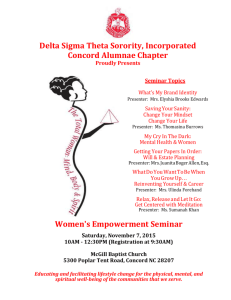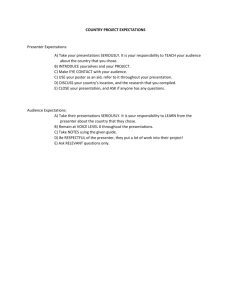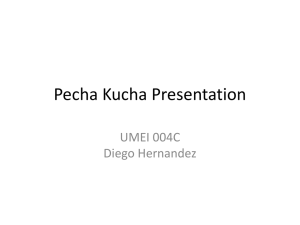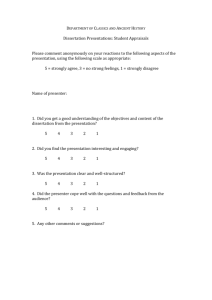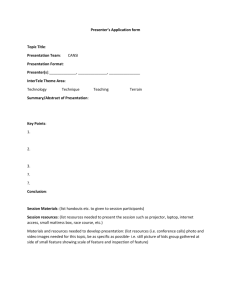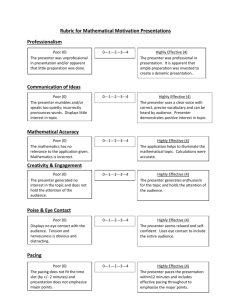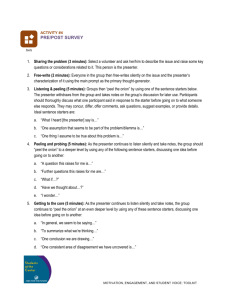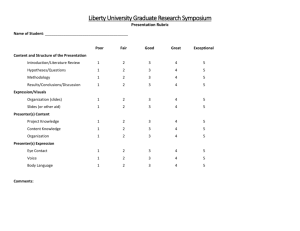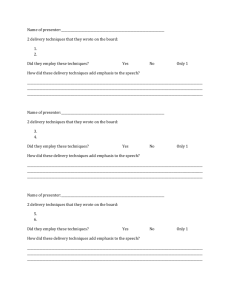Warm and Cool Feedback
advertisement
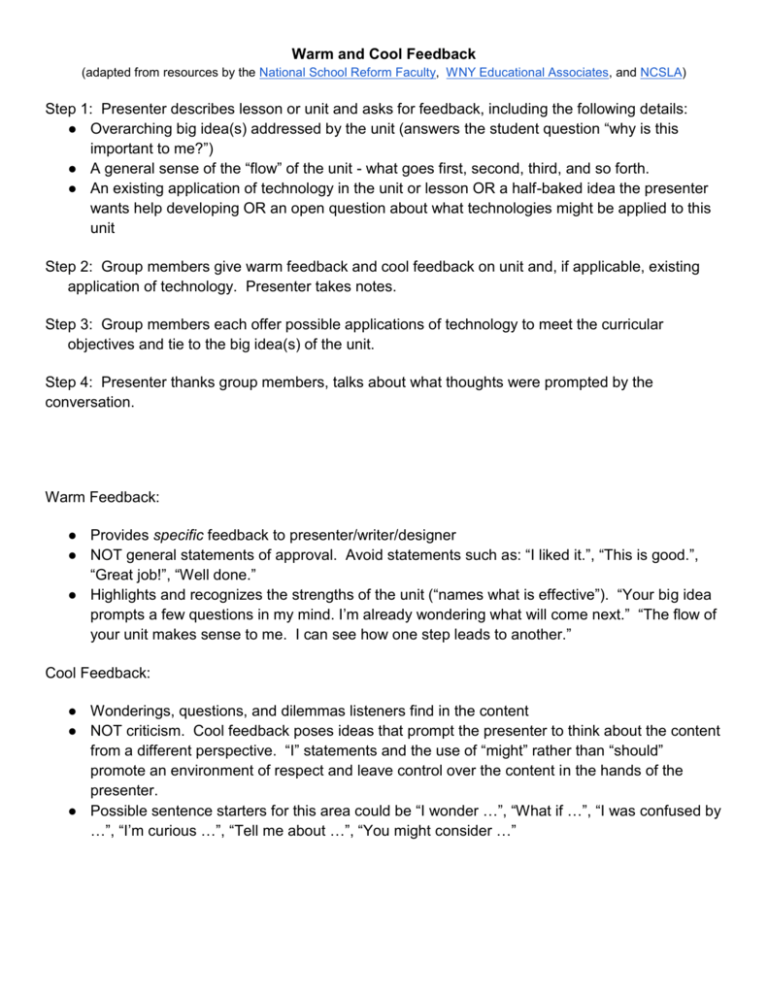
Warm and Cool Feedback (adapted from resources by the National School Reform Faculty, WNY Educational Associates, and NCSLA) Step 1: Presenter describes lesson or unit and asks for feedback, including the following details: ● Overarching big idea(s) addressed by the unit (answers the student question “why is this important to me?”) ● A general sense of the “flow” of the unit - what goes first, second, third, and so forth. ● An existing application of technology in the unit or lesson OR a half-baked idea the presenter wants help developing OR an open question about what technologies might be applied to this unit Step 2: Group members give warm feedback and cool feedback on unit and, if applicable, existing application of technology. Presenter takes notes. Step 3: Group members each offer possible applications of technology to meet the curricular objectives and tie to the big idea(s) of the unit. Step 4: Presenter thanks group members, talks about what thoughts were prompted by the conversation. Warm Feedback: ● Provides specific feedback to presenter/writer/designer ● NOT general statements of approval. Avoid statements such as: “I liked it.”, “This is good.”, “Great job!”, “Well done.” ● Highlights and recognizes the strengths of the unit (“names what is effective”). “Your big idea prompts a few questions in my mind. I’m already wondering what will come next.” “The flow of your unit makes sense to me. I can see how one step leads to another.” Cool Feedback: ● Wonderings, questions, and dilemmas listeners find in the content ● NOT criticism. Cool feedback poses ideas that prompt the presenter to think about the content from a different perspective. “I” statements and the use of “might” rather than “should” promote an environment of respect and leave control over the content in the hands of the presenter. ● Possible sentence starters for this area could be “I wonder …”, “What if …”, “I was confused by …”, “I’m curious …”, “Tell me about …”, “You might consider …”


